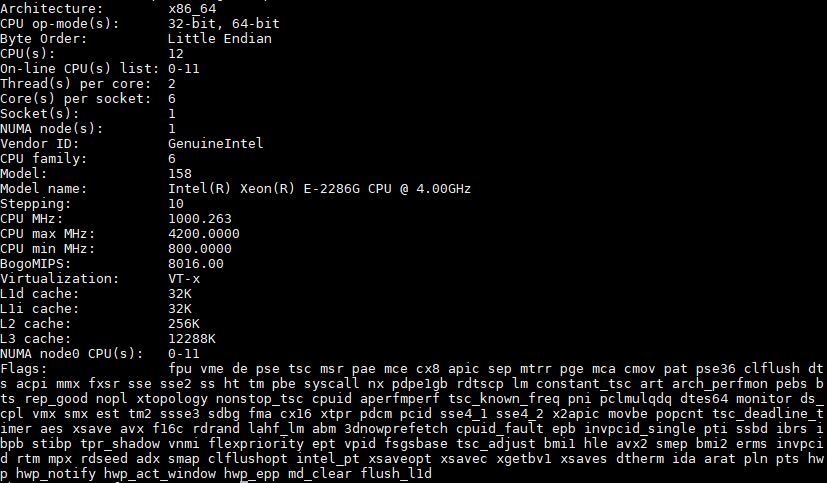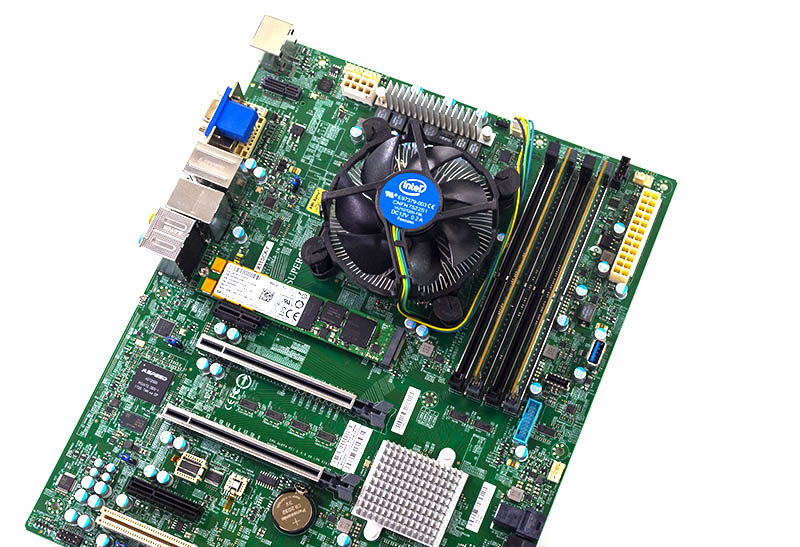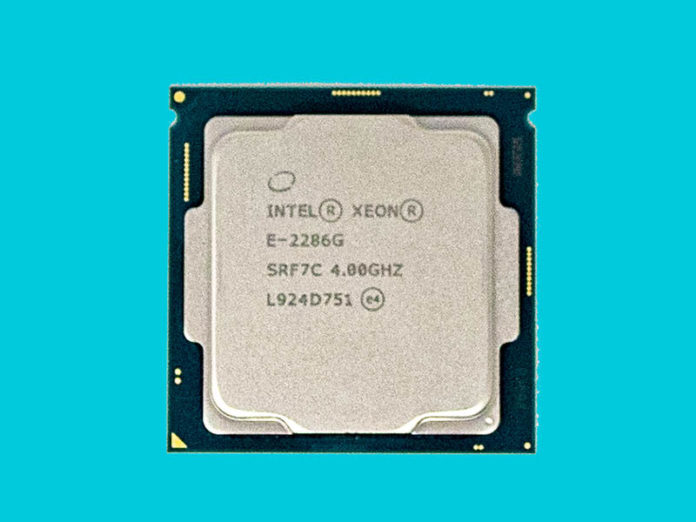Our next CPU review is focused on the Intel Xeon E-2286G. This is a slight upgrade from the previous generation Intel Xeon E-2186G. With this generation, clock speeds raise 200MHz but we are sitting in the same price band. Perhaps the biggest difference with this generation is that there are now 8-core parts such as the Intel Xeon E-2288G which expand the use cases of Xeon E platforms. In our review, we are going to look at how this chip performs and where it fits on the value scale given what else is available.
Key stats for the Intel Xeon E-2286G: 6 cores / 12 threads with a 4GHz base clock and 4.9GHz turbo boost. There is 12MB of onboard cache. The CPU features a 95W TDP. These are $450 list price parts. Here is the Intel Ark page for your reference.
Here is what the lscpu output looks like for an Intel Xeon E-2286G:

Only two years ago, the segment that the Xeon E-2286G is in was mired in generations of quad core chips with very minor generational improvements. In 2018, we saw the first 6 core processor in this segment. In 2019, the updated version of the six core is now an upper mid-range part in these sockets.
One of the biggest benefits to the Intel Xeon E-2286G is the “G” which denotes onboard graphics. For those that need a server that can do video encoding/ transcoding, having onboard graphics is important.
Test Configuration
Here is our basic configuration for this class of CPU:
- Motherboard: Supemicro X11SCA-F
- CPU: Intel Xeon E-2286G
- RAM: 4x 8GB DDR4-2666 ECC UDIMMs
- SSD: Intel DC S3710 400GB
- SATADOM: Supermicro 32GB SATADOM
The CPU itself supports up to 128GB of RAM, in a 4x 32GB configuration. We see these platforms using 32-64GB or less given cost sensitivities.

There are going to be folks who want to point to AMD alternatives. As of this writing, there are really no alternatives in this space because while AMD may have competitive CPU parts, vendors have a vibrant Intel Xeon E-2100/ E-2200/ Core i3 ecosystem. AMD needs to do some work here to catch up, but it is not a focus market for them. Single socket servers in this segment are a relatively low volume area.
Next, we are going to take a look at our Intel Xeon E-2286G benchmarks, we are then going to focus on power consumption then conclude with our final words on the processors.




